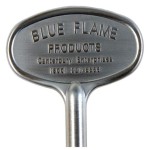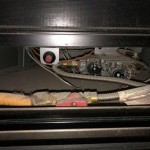How To Install A Pellet Stove Insert (Without a Fireplace)
Installing a pellet stove insert represents a practical method for enhancing heating efficiency and reducing energy consumption within a home. While pellet stove inserts are commonly associated with existing fireplaces, it is entirely feasible to install one without a pre-existing fireplace structure. This process, however, demands careful planning, adherence to safety regulations, and a solid understanding of building codes.
This article provides a comprehensive guide to installing a pellet stove insert in a home that does not have a fireplace. It outlines the necessary steps, safety precautions, and considerations involved in this installation, ensuring a safe and efficient heating solution for the homeowner.
Before commencing any installation work, it is crucial to consult with local building authorities to acquire the required permits and ensure compliance with all applicable building codes. Failure to obtain necessary permits could result in fines or the removal of the installation. Additionally, a professional inspection can help identify potential hazards or structural limitations that may need to be addressed during the installation process.
Site Preparation and Planning
The initial stage involves selecting an appropriate location for the pellet stove insert. This location should be chosen based on factors such as proximity to an exterior wall for venting, accessibility to electrical power, and sufficient clearances from combustible materials. A level, non-combustible floor is essential, and if the existing floor is combustible, a listed floor protector that extends beyond the stove's footprint is required. The specific dimensions and R-value requirements for the floor protector will be dictated by the stove manufacturer's instructions.
Once the location is determined, a detailed plan should be developed, including the layout of the venting system, electrical connections, and any necessary structural modifications. Accurate measurements are crucial to ensure that the stove insert fits properly and that the venting system is correctly sized and installed. Consider the aesthetics of the installation and how the stove will integrate into the room's design.
Next, assess the structural integrity of the wall where the venting system will be installed. If the wall is not sufficiently strong, reinforcement may be necessary. Ensure that the wall is free of any obstructions, such as wiring or plumbing, that could interfere with the venting installation.
Venting System Installation
The venting system is a critical component of a pellet stove insert installation, responsible for safely expelling exhaust gases outside the home. Unlike traditional wood-burning fireplaces, pellet stoves utilize a smaller diameter venting system, typically 3 or 4 inches in diameter, made of specialized stainless-steel venting specifically designed for pellet stoves.
The venting system must be installed according to the stove manufacturer's instructions and local building codes. A common venting configuration for installations without a fireplace is a direct vent system, which involves running the vent pipe horizontally through the wall and terminating with a vent cap on the exterior of the building. The vent cap should be positioned to prevent exhaust gases from re-entering the building or creating a nuisance for neighbors. The specific height and location of the vent cap must meet the code requirements and manufacturer's specifications.
Horizontal venting systems should be kept as short as possible and have a slight upward slope to facilitate proper drafting and prevent the accumulation of creosote. Any elbows or bends in the venting system will reduce the efficiency of the stove and increase the risk of blockages. Ensure that all vent pipe connections are securely sealed with high-temperature silicone sealant to prevent leaks. A thimble should be used where the vent pipe passes through the wall to provide a fire-resistant barrier.
It is also important to consider the clearances to combustible materials when installing the venting system. The vent pipe should be kept a safe distance away from any flammable surfaces, such as wood framing or siding. Consult the stove manufacturer's instructions and local building codes for specific clearance requirements. If necessary, heat shields can be used to reduce the clearance requirements.
Prior to completing the venting system, a thorough inspection is recommended to verify that all connections are secure, clearances are adequate, and the system is properly supported. A smoke test can be performed to check for leaks in the venting system. This involves lighting a small amount of combustible material near the stove and observing the smoke flow to ensure that it is being drawn up through the venting system and expelled outside.
Electrical Connections
Pellet stoves require a dedicated electrical circuit to power the auger, blower, and control panel. The electrical circuit should be sized according to the stove manufacturer's specifications and should be protected by a circuit breaker. A licensed electrician should perform the electrical work to ensure that it meets all applicable electrical codes.
Typically, a 120-volt, 15-amp circuit is sufficient for most pellet stoves. A dedicated outlet should be installed near the stove's location, and the stove should be plugged directly into the outlet. Avoid using extension cords, as they can overheat and pose a fire hazard.
The electrical wiring should be properly grounded to protect against electrical shock. The grounding wire should be connected to a grounding rod or other approved grounding system. All electrical connections should be securely fastened and protected from moisture. Before connecting the stove to the electrical circuit, ensure that the circuit breaker is turned off.
After the electrical connections are completed, the circuit breaker should be turned on and the stove should be tested to verify that it is receiving power. Check the stove's control panel to ensure that it is functioning properly. Test the auger, blower, and igniter to confirm that they are working correctly.
Pellet Stove Insert Installation
Once the site is prepared, the venting system is installed, and the electrical connections are completed, the pellet stove insert can be installed. Carefully position the stove insert in the designated location, ensuring that it is level and stable. If necessary, use shims to level the stove. Connect the stove's vent pipe to the venting system, ensuring that the connection is secure and sealed.
Connect the stove's electrical cord to the dedicated outlet. Double-check all connections to ensure that they are properly installed and secured. Before operating the stove, carefully read the manufacturer's instructions to ensure that you understand the stove's operation and safety features.
Fill the stove's hopper with pellets. Start the stove according to the manufacturer's instructions. Observe the stove's operation to ensure that it is burning properly and that the venting system is functioning correctly. Check for any leaks or unusual noises. Monitor the stove's temperature to ensure that it is not overheating.
After the stove has been running for a while, inspect the venting system for any signs of leaks or creosote buildup. Clean the stove regularly according to the manufacturer's instructions. This will help to ensure that the stove operates efficiently and safely.
Safety Considerations
Safety should be the paramount consideration throughout the entire installation process. Ensure that the stove is installed according to the manufacturer's instructions and local building codes. Install a carbon monoxide detector in the vicinity of the stove to alert occupants to the presence of carbon monoxide. Test the detector regularly to ensure that it is functioning properly. Keep combustible materials away from the stove and venting system. Store pellets in a dry, safe location away from heat sources.
Regular maintenance is essential for ensuring the safe and efficient operation of the pellet stove. Clean the stove's venting system at least once a year, or more frequently if necessary. Inspect the stove's components for wear and tear. Replace any worn or damaged parts promptly. Have the stove professionally inspected and serviced annually to ensure that it is operating safely and efficiently.
Proper operation of the pellet stove is also crucial for safety. Never operate the stove with the door open or with any of the safety features disabled. Use only approved pellets in the stove. Do not overfill the hopper. Allow the stove to cool down completely before cleaning it. Store ashes in a metal container with a tight-fitting lid. Dispose of ashes properly. Educate all occupants of the home about the safe operation of the pellet stove.
By following these guidelines, a homeowner can successfully install a pellet stove insert in a home without a pre-existing fireplace, providing a reliable and efficient heating solution while maintaining a safe living environment.
Inserts Without The Surrounds Or Advice Hearth Com Forums Home
Wood Insert With No Surround Hearth Com Forums Home
Inserts Without The Surrounds Or Advice Hearth Com Forums Home

Pellet Stove Insert Installation Self Install Diy
Inserts Without The Surrounds Or Advice Hearth Com Forums Home

Installing A Wood Burner Without Chimney Direct Stoves
Anyone Burn An Insert Without The Surround Hearth Com Forums Home

Pellet Stove Inserts Turn Drafty Fireplaces Into Heaters Complete Home Concepts

Sawmill Creek Woodworking Community

What S Best A Fireplace Stove Or Insert We Love Fire
Related Posts








